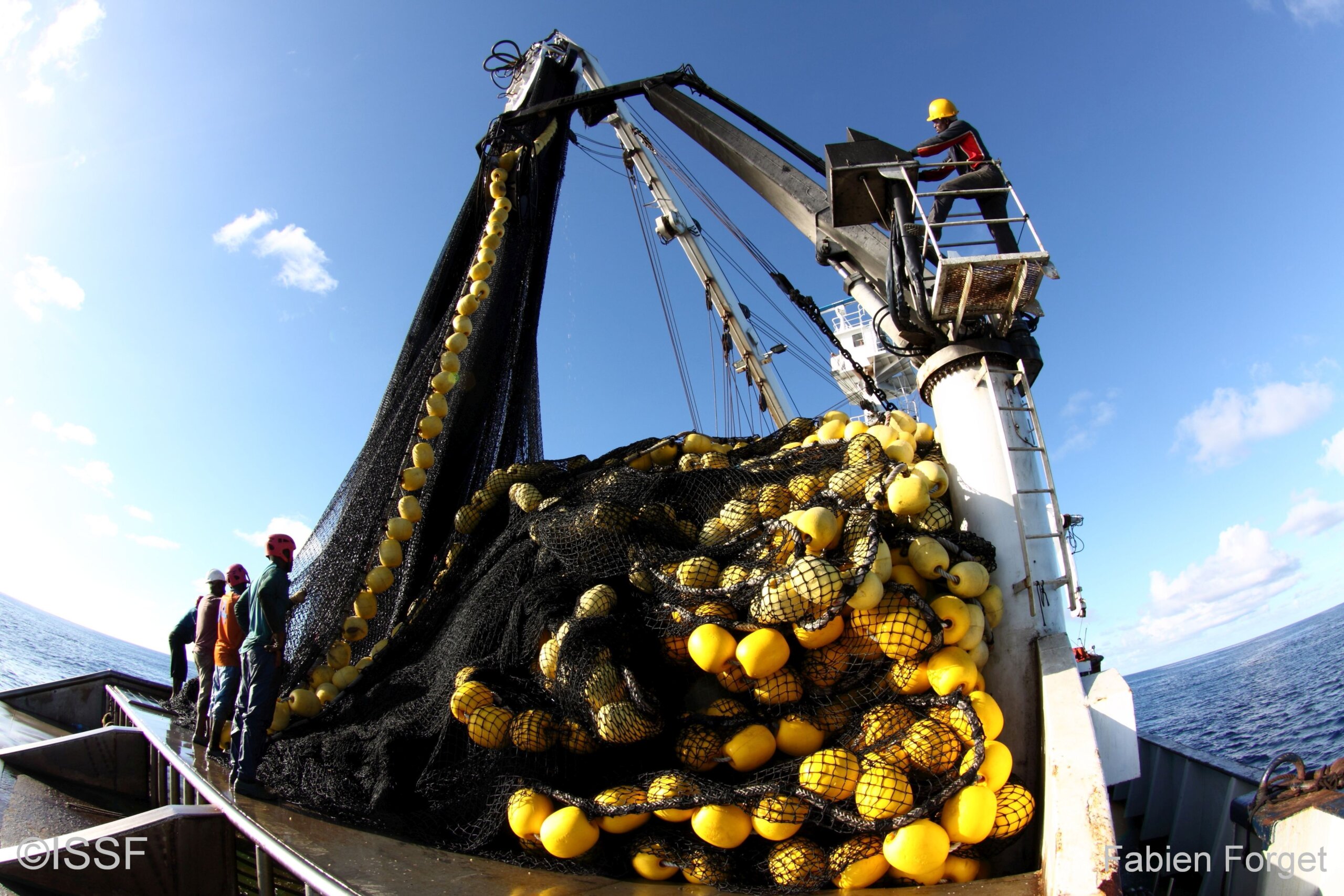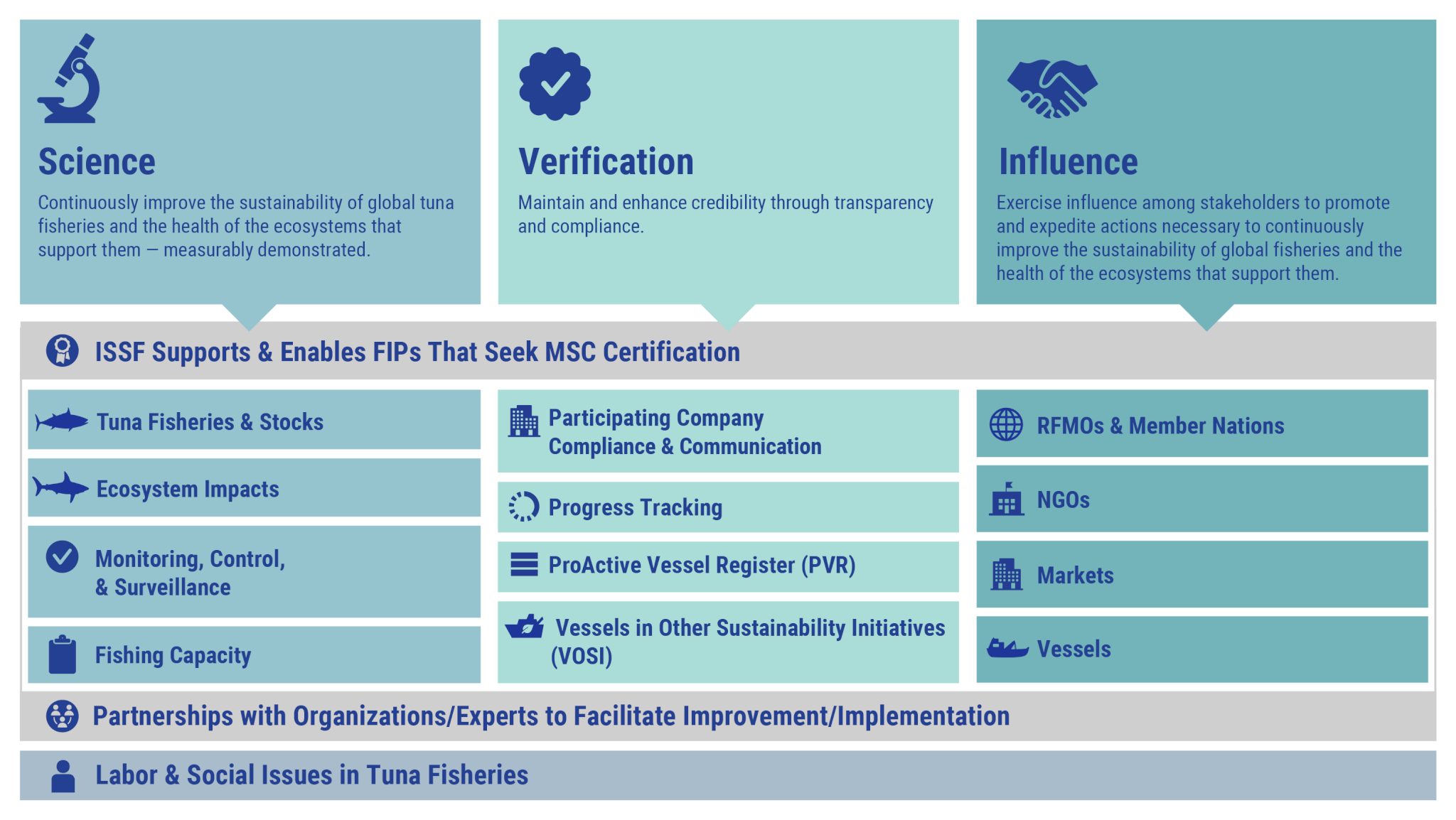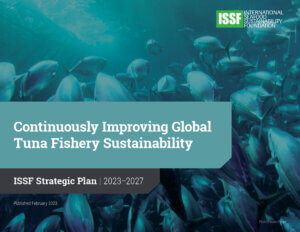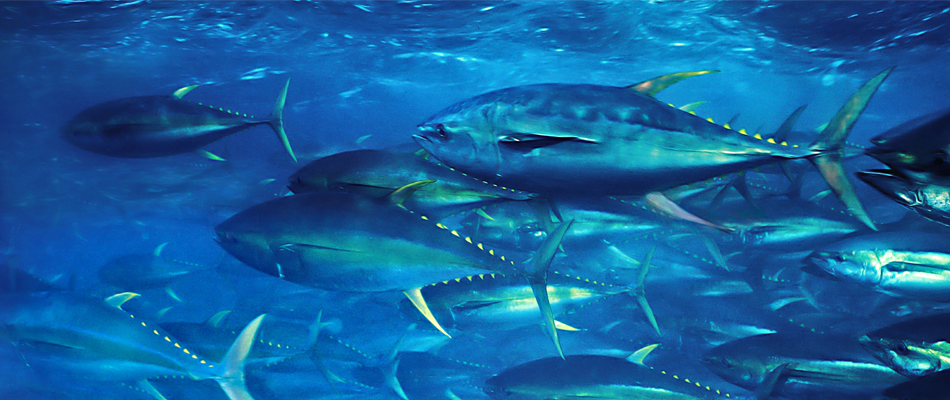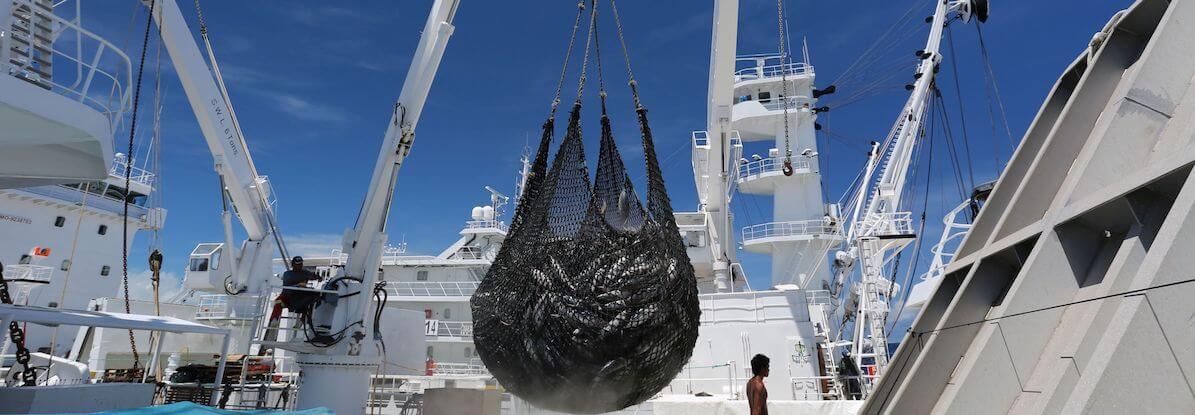
Fishery Improvement Projects
Our longstanding objective is for all tuna fisheries — regardless of fishing method, target species, or location — to be capable of meeting and maintaining the Marine Stewardship Council (MSC) certification standard without conditions.
The harvesting of seven economically significant tuna species is carried out by, or takes place in the waters of, 80 nations. Tuna fishing involves thousands of vessels in all oceans, and impacts many marine animals and environments.
Given that scale and scope, ISSF’s strategic plan outlines our role in helping to continuously improve tuna fishery sustainability, including through fishery improvement projects, or FIPs.
ISSF’s Strategic Plan & FIP Support
Explore ISSF’s new 5-year strategic plan to learn how we will continue to support fisheries seeking MSC fishery certification — including through science-based guidance, data, and tools.
MSC certification is a science-based global standard in sustainable fishing. Seafood products sourced from MSC-certified fisheries can carry the MSC “ecolabel” for consumers.
THE VALUE OF TUNA FIPS
Market Incentives
A Fishery Improvement Project (FIP) harnesses the power of the private sector (e.g., retailers, processors, producers, and/or catchers) to incentivize positive changes toward sustainability in the fishery — and seek to make these changes endure through policy change.
Collaborative Problem-Solving
A FIP is a multi-stakeholder effort to address some — or all — environmental challenges in a fishery. It identifies the issues that need to be addressed, sets the priority actions that should be undertaken, and then oversees the work plan adopted.
Performance Benchmarks
Some FIPs may aim to achieve a level of performance consistent with an unconditional pass of the Marine Stewardship Council (MSC) standard, while others may have MSC certification as an end goal.
Accountability for Progress
FIPs are structured, collaborative, and multi-year initiatives that need to have detailed workplans and regular milestones for evaluating progress.
TOOLS FOR FIP STAKEHOLDERS
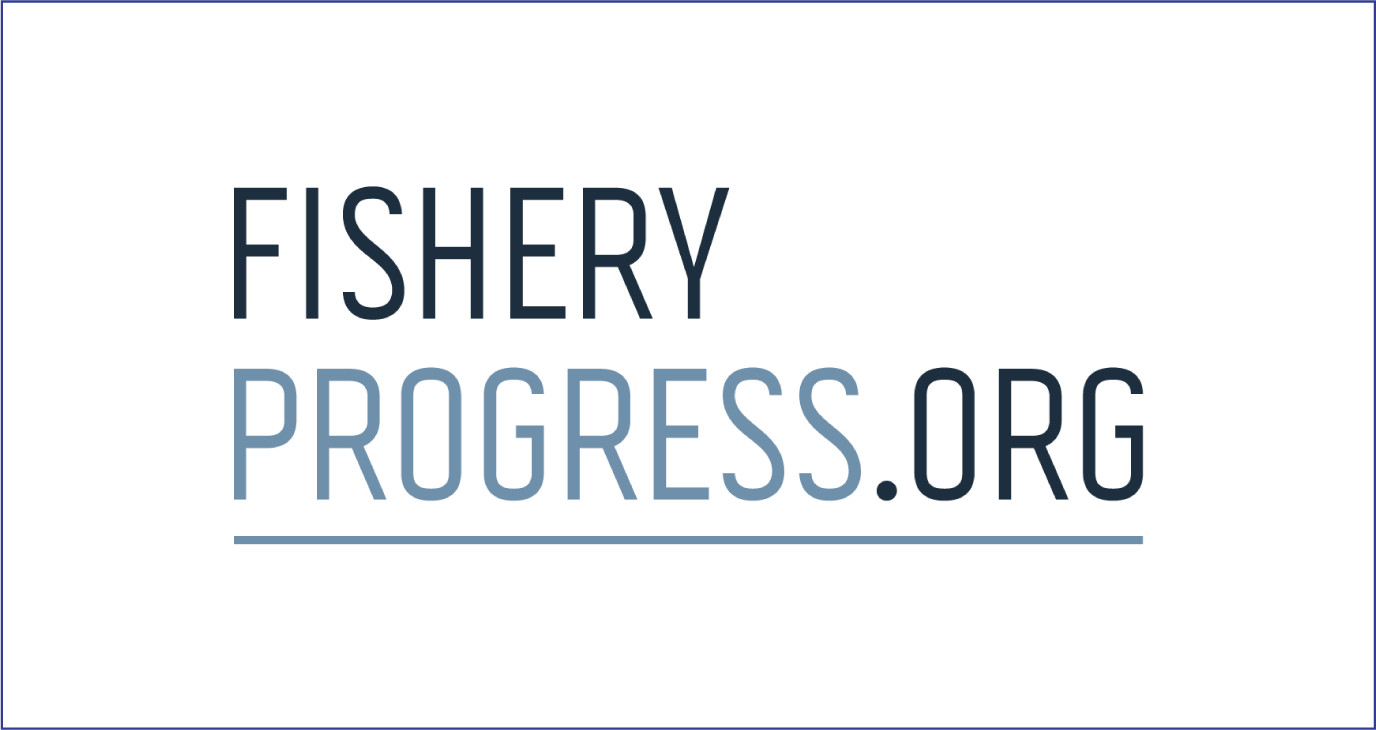
FIP Tracking
FIPs are tracked globally by FisheryProgress.org, which you can search by FIP name, species, country, participant, and progress rating. Businesses and foundations that are supporting FIPs can evaluate their progress on the site, and other stakeholders can:
- Launch a FIP by learning how to engage stakeholders, develop the FIP workplan, and finance the FIP
- Assess a fishery, including the initial assessment and scoping document
- Report FIP progress, including three-year audits for comprehensive FIPs
- Share FIP success stories
FisheryProgress.org is overseen by an advisory committee and managed day to day by FishChoice. The Conservation Alliance for Seafood Solutions developed the FIP guidelines that are the foundation for the site. The Technical Oversight Committee helps to guide the evaluation process and related functionality.

ISSF Support & Resources
Our “Tuna FIPs” table links to publicly listed FIPs from around the world that are third-party verified. Each tuna FIP addresses one or more gear types and tuna species. ISSF advises all FIPs to create a profile for their project on the site.
There are more than 50 tuna FIPs worldwide — including with participation from some ISSF participating companies — encompassing four of the five tuna Regional Fisheries Management Organization (RFMO) regions, with the potential for many new additional projects.
- See ISSF FIP Resources to learn how we can help tuna FIPs to be successful, including a purse seine FIPs best practices checklist and longline FIPs best practices checklist.
- Access ISSF resources, which are matched to MSC Performance Indicators, through our FIP Resources Finder tool.
- If you need more assistance, contact us with FIP questions or requests.
2023-2027 Strategic Plan
Learn about our new five-year goal for sustainable tuna fisheries — and our approach to achieving it.
FIPS by RFMO Region
Browse our Tuna FIPs list to find Fishery Improvement Projects by tuna RFMO region.
TUNA NEWS
